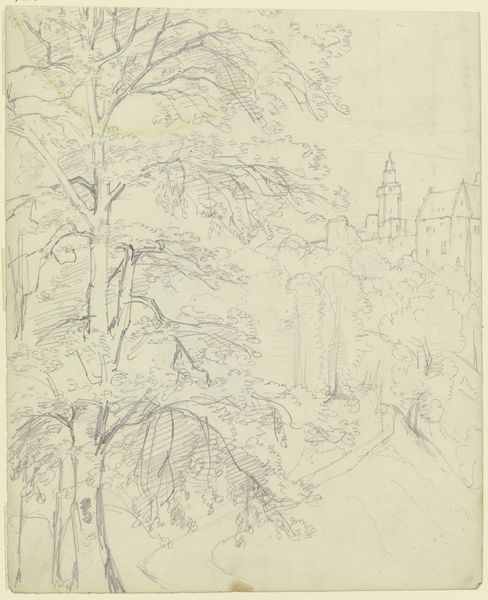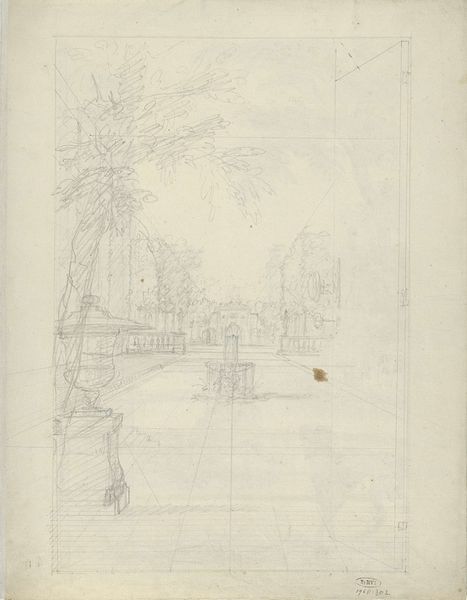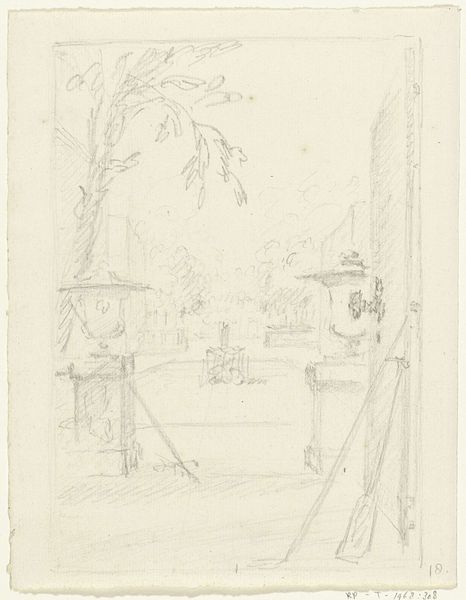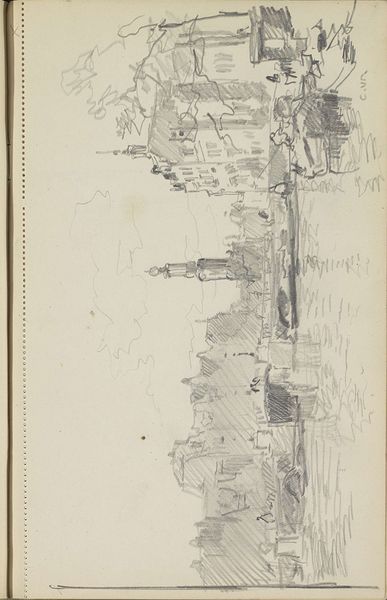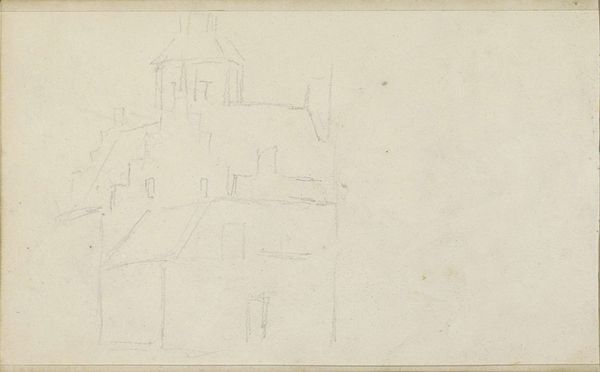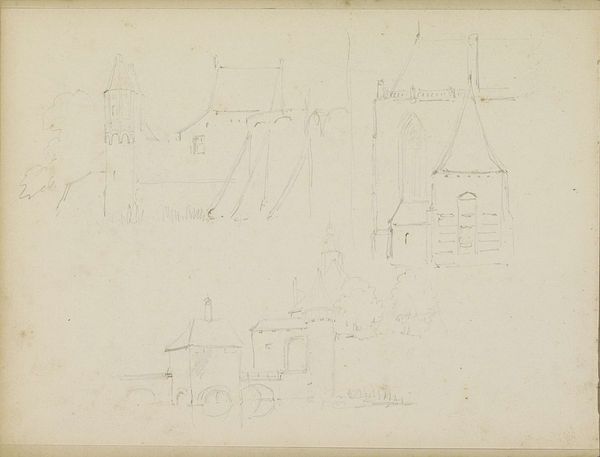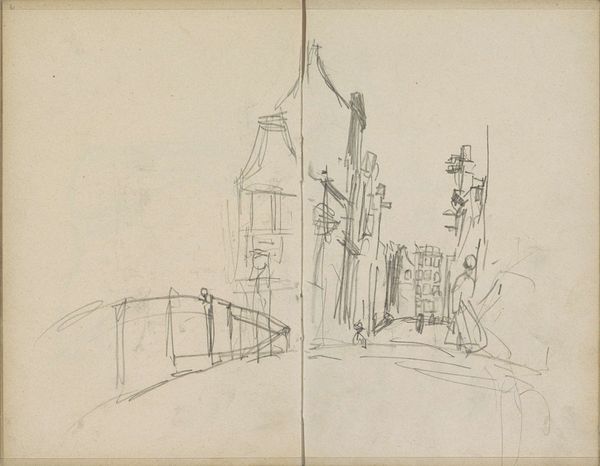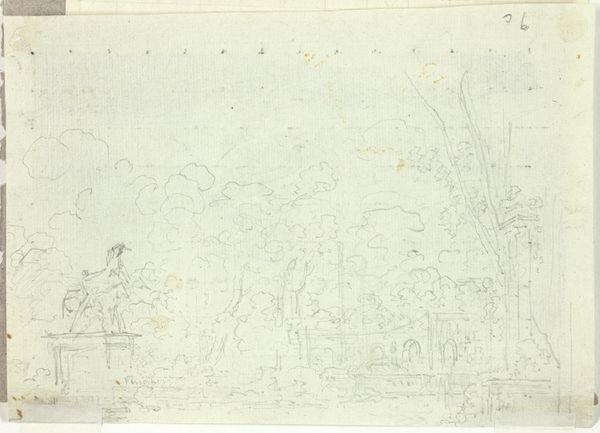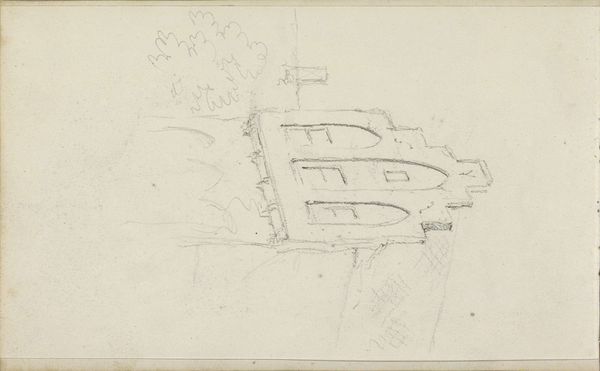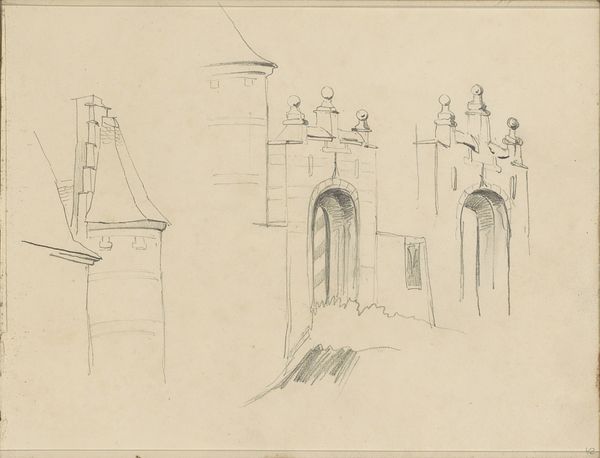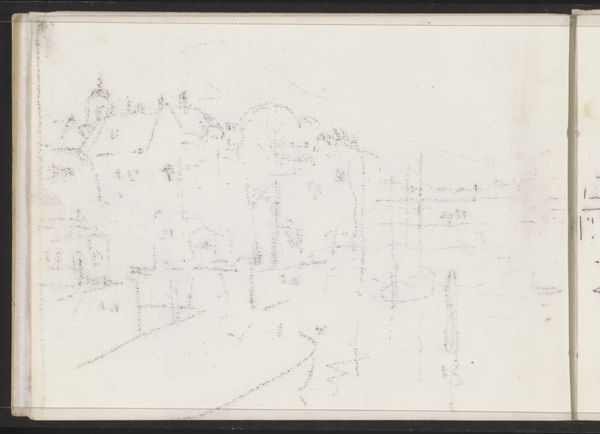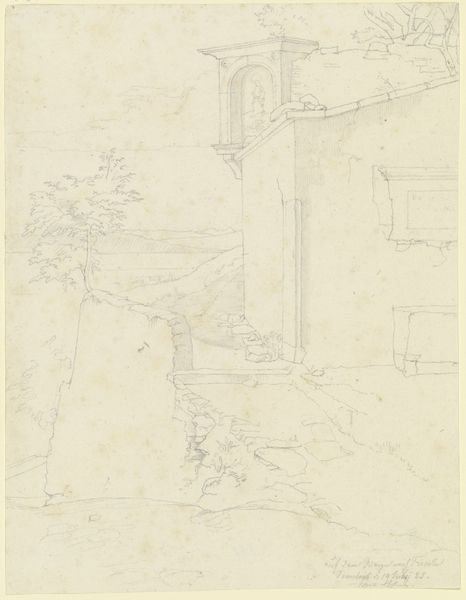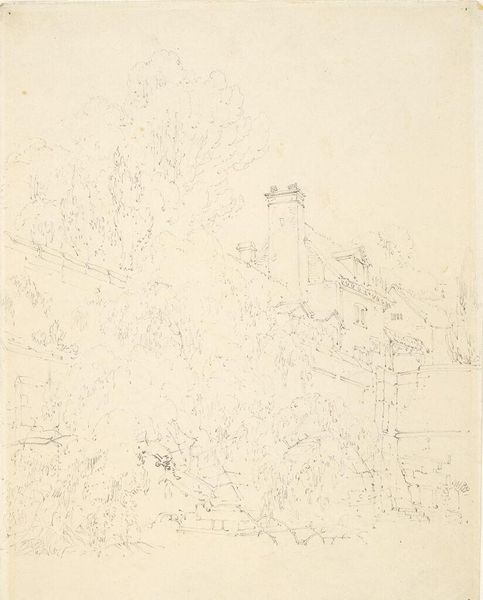
Ontwerp voor een zaalstuk: tuinhuis aan het eind van een laan met bomen 1715 - 1798
0:00
0:00
drawing, pencil
#
drawing
#
landscape
#
etching
#
pencil
Dimensions: height 227 mm, width 236 mm
Copyright: Rijks Museum: Open Domain
Editor: So, this sketch, “Ontwerp voor een zaalstuk: tuinhuis aan het eind van een laan met bomen”, is a pencil and etching drawing by Dionys van Nijmegen, placing its creation somewhere in the late 18th century. I find the composition simple but a little haunting. What symbolic significance might a structure like this have held? Curator: Look at the trees, Editor; the way they’re rendered almost as enclosing, protective figures flanking the path. The lane directs our gaze, literally guiding our steps toward that almost ethereal structure in the distance. Think of gardens in the collective unconscious; Eden, Arcadia. Does the image suggest an idealized or real place? Editor: It definitely feels more idealized, given the softness of the lines. So the building at the end is less about physical structure and more about a symbolic destination? Curator: Precisely! This could symbolize a spiritual journey, a quest for enlightenment, or simply a retreat from the everyday world. That simple structure is elevated to a locus of possible transcendence or the rewards of devotion. Do you think that idea still resonates today? Editor: Absolutely. Even now, we use visual metaphors of pathways and journeys to communicate personal growth. It’s fascinating to see such enduring symbolism in what seems, on the surface, a simple landscape drawing. Curator: Exactly. And note the slight sketchiness itself lends a sense of impermanence to it, further enhancing the feeling that this "tuinhuis" represents a hope, rather than a destination reached. It leaves me thinking about how art reflects enduring human longings. Editor: It gives you a lot to think about, thank you!
Comments
No comments
Be the first to comment and join the conversation on the ultimate creative platform.
